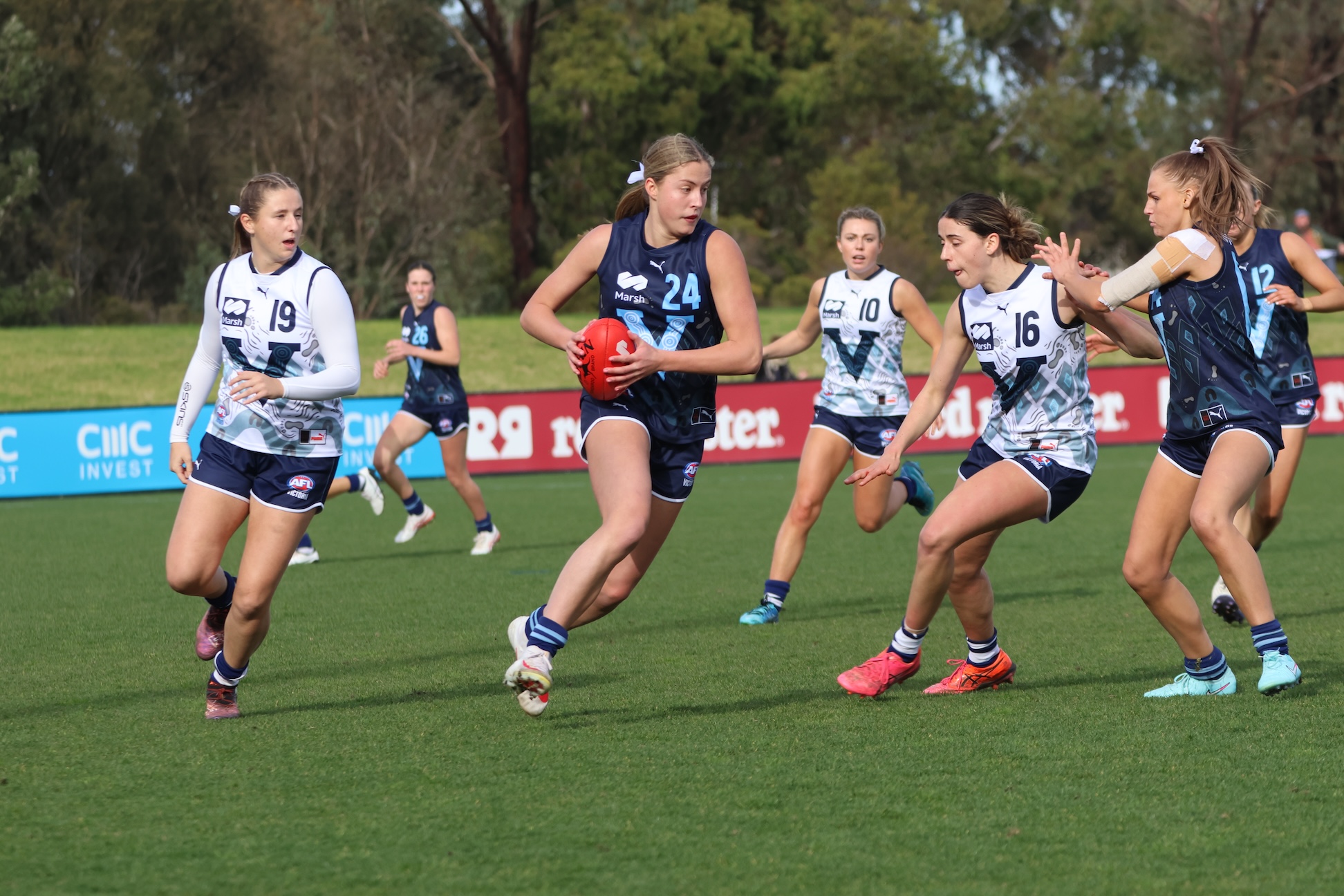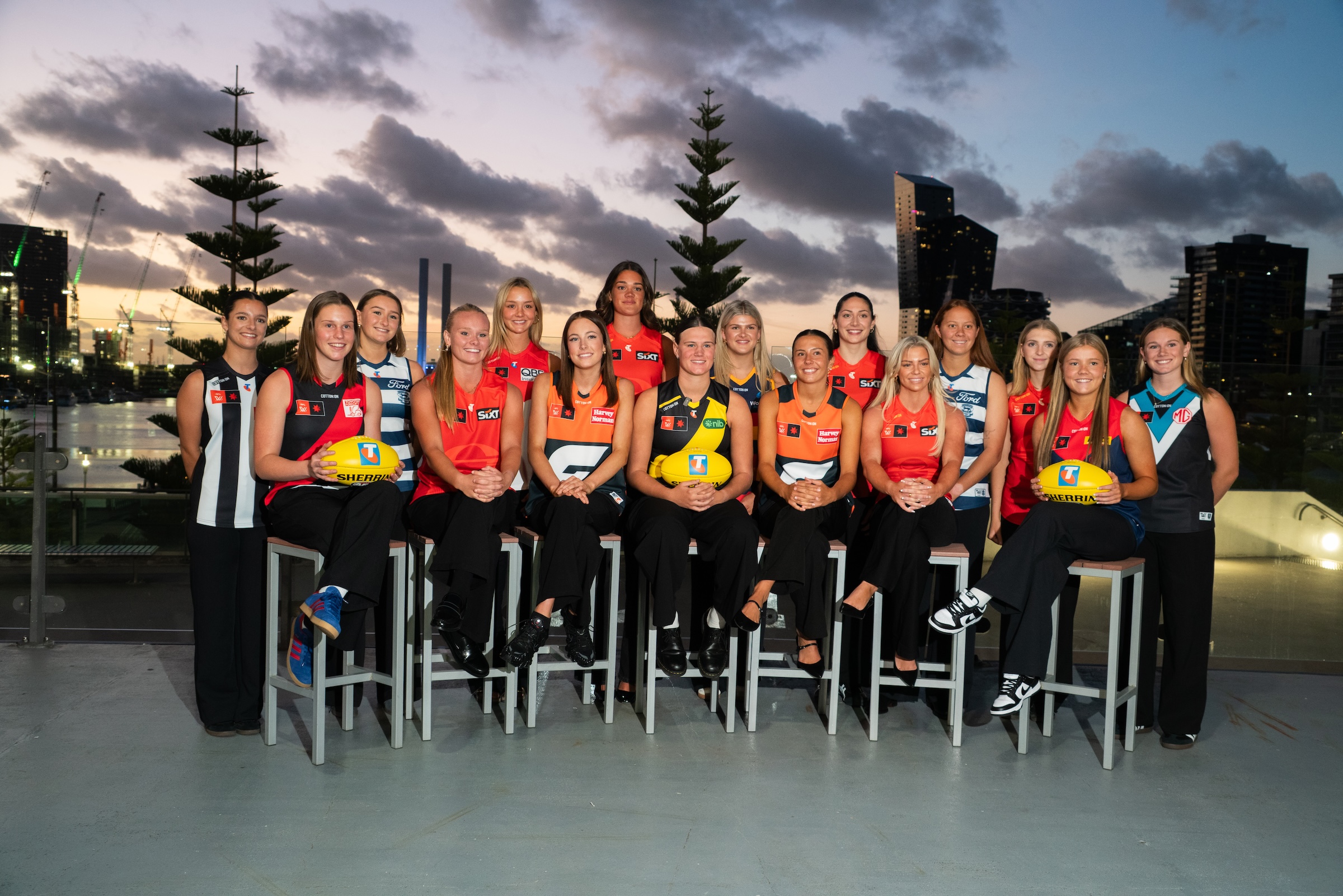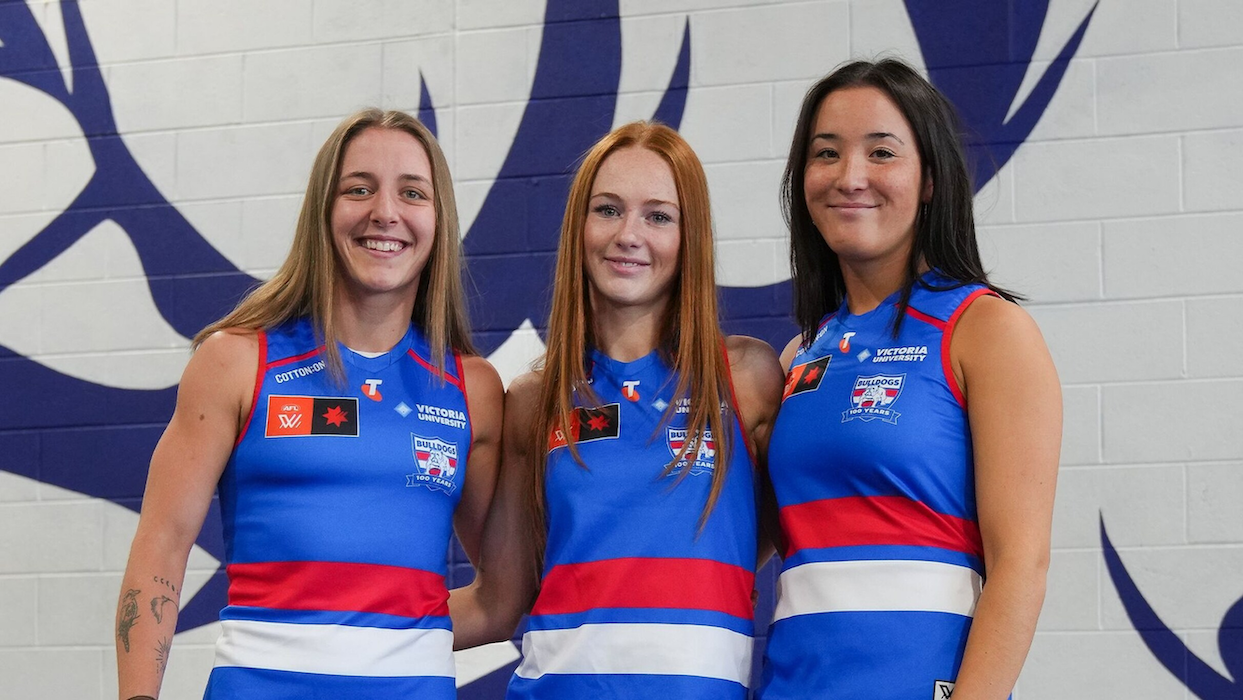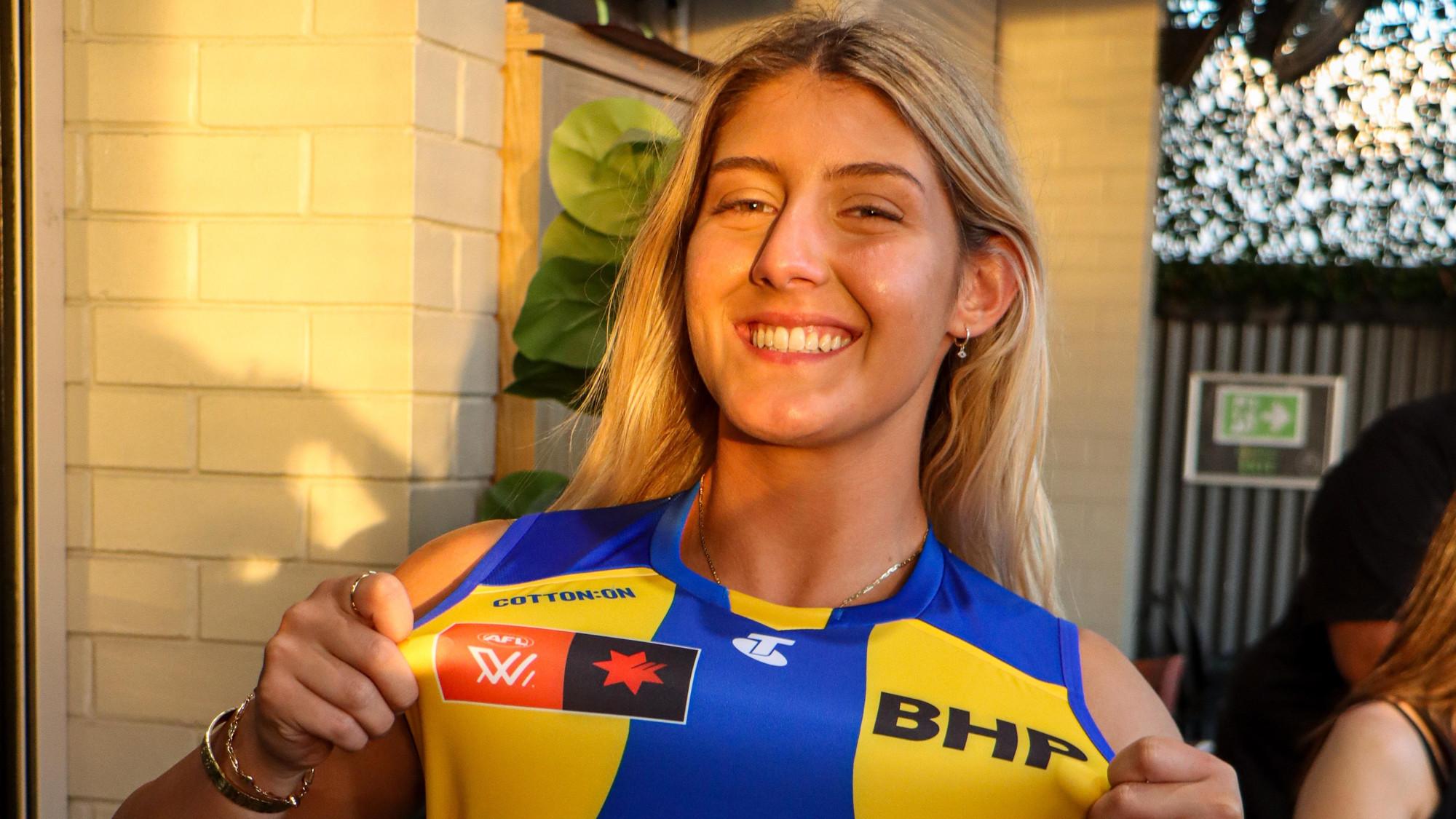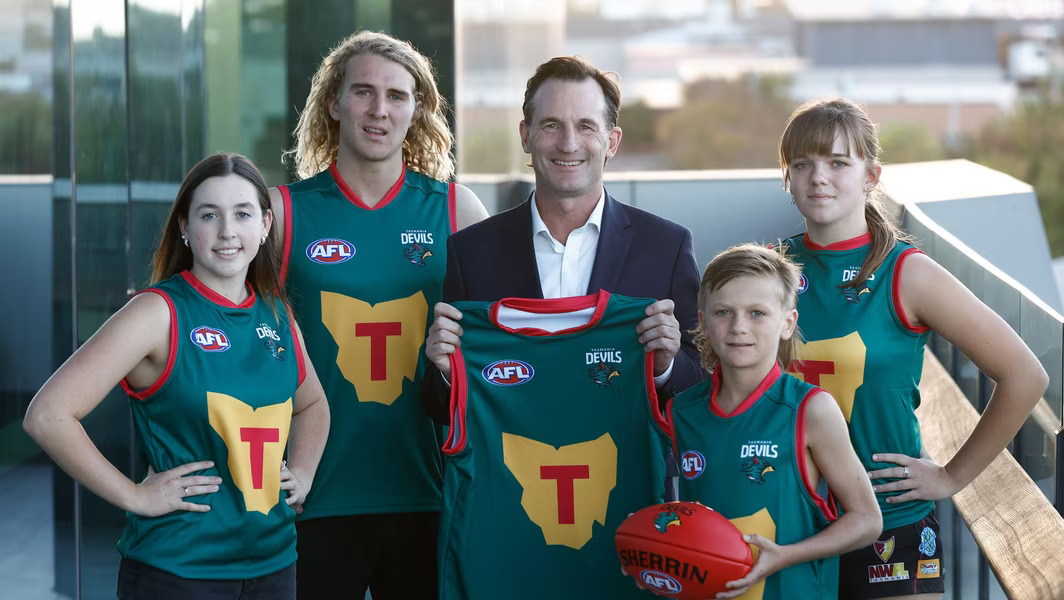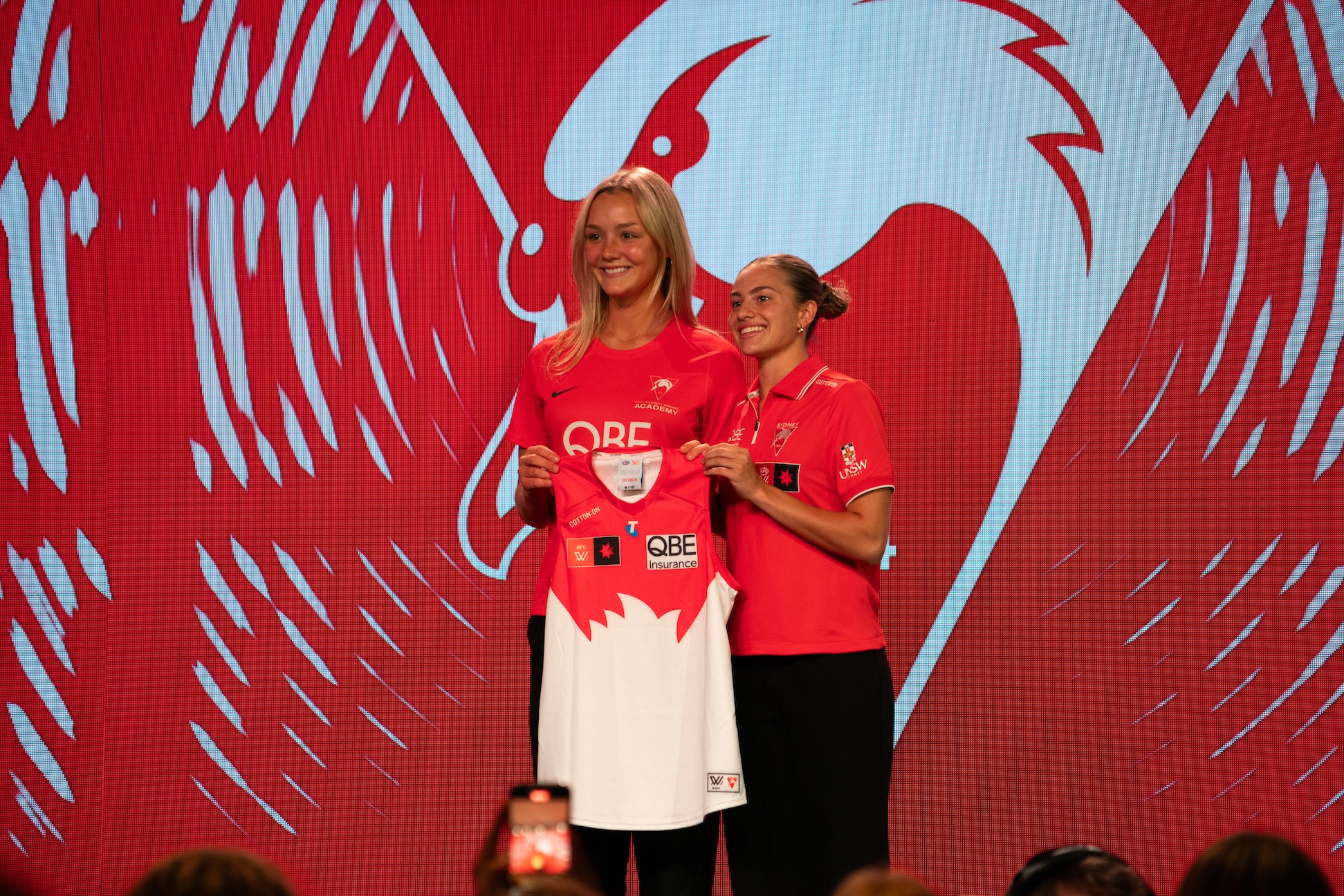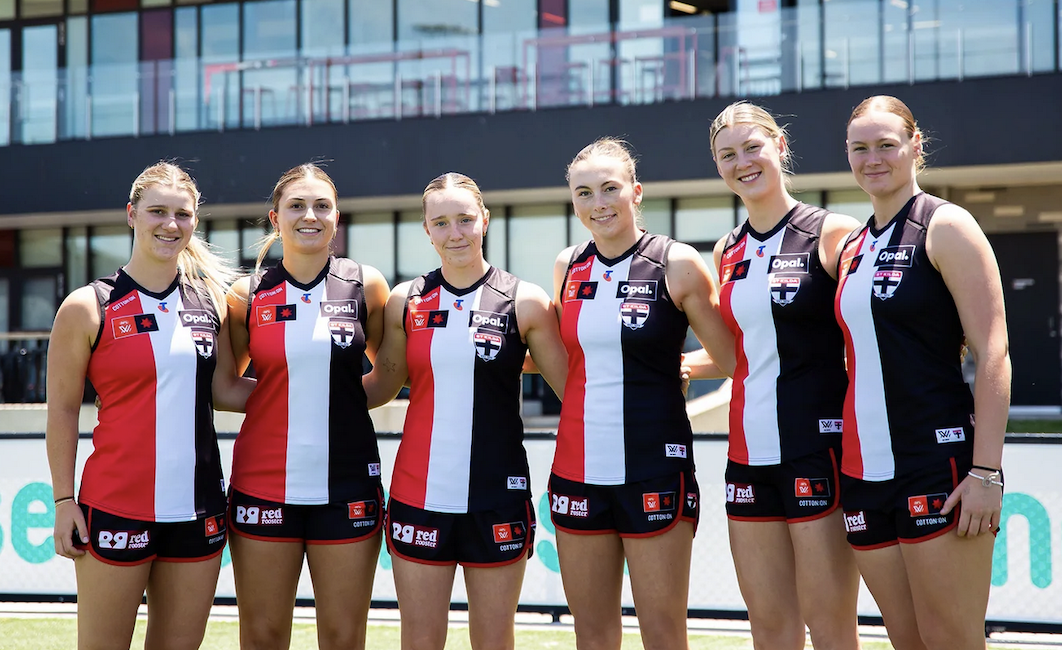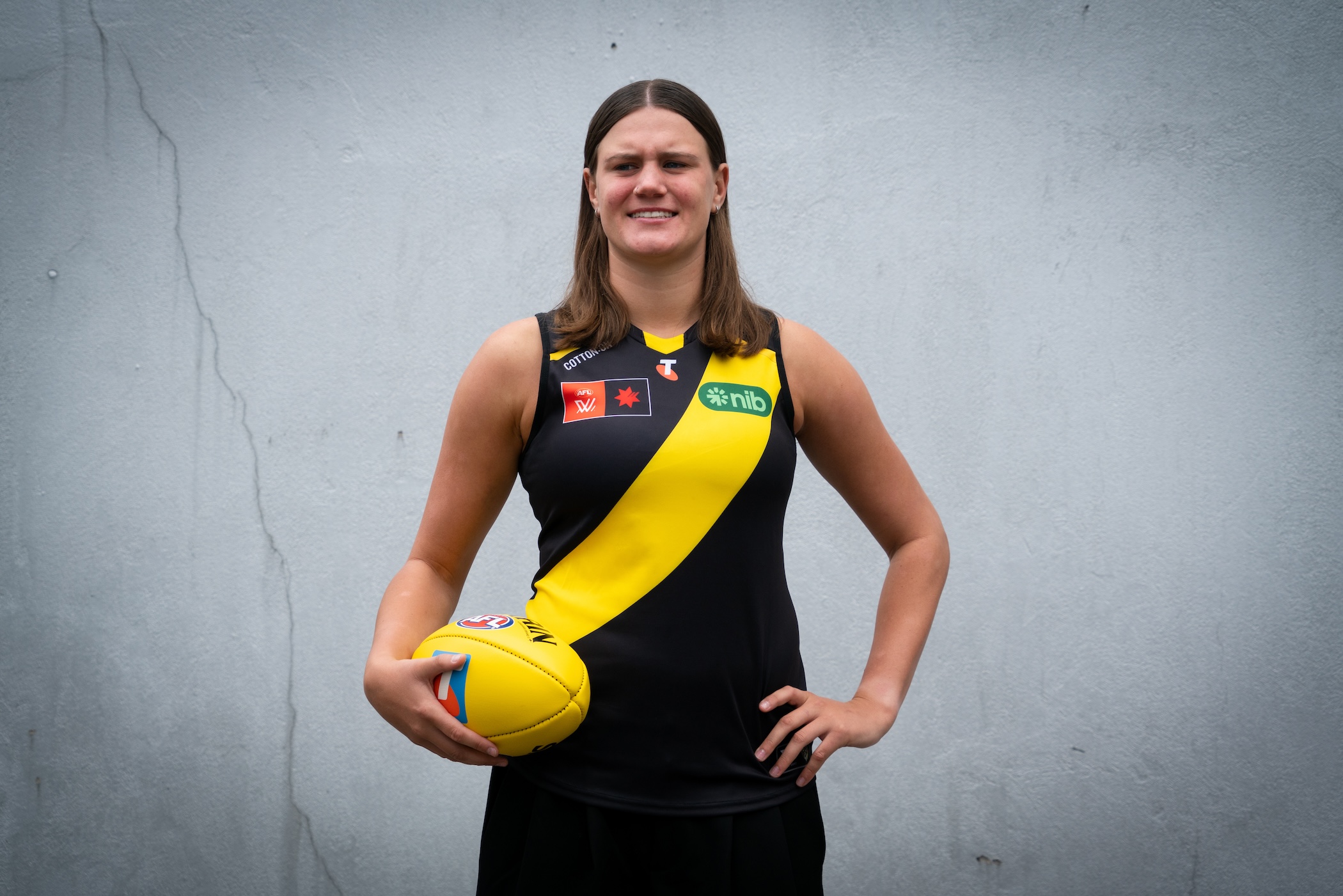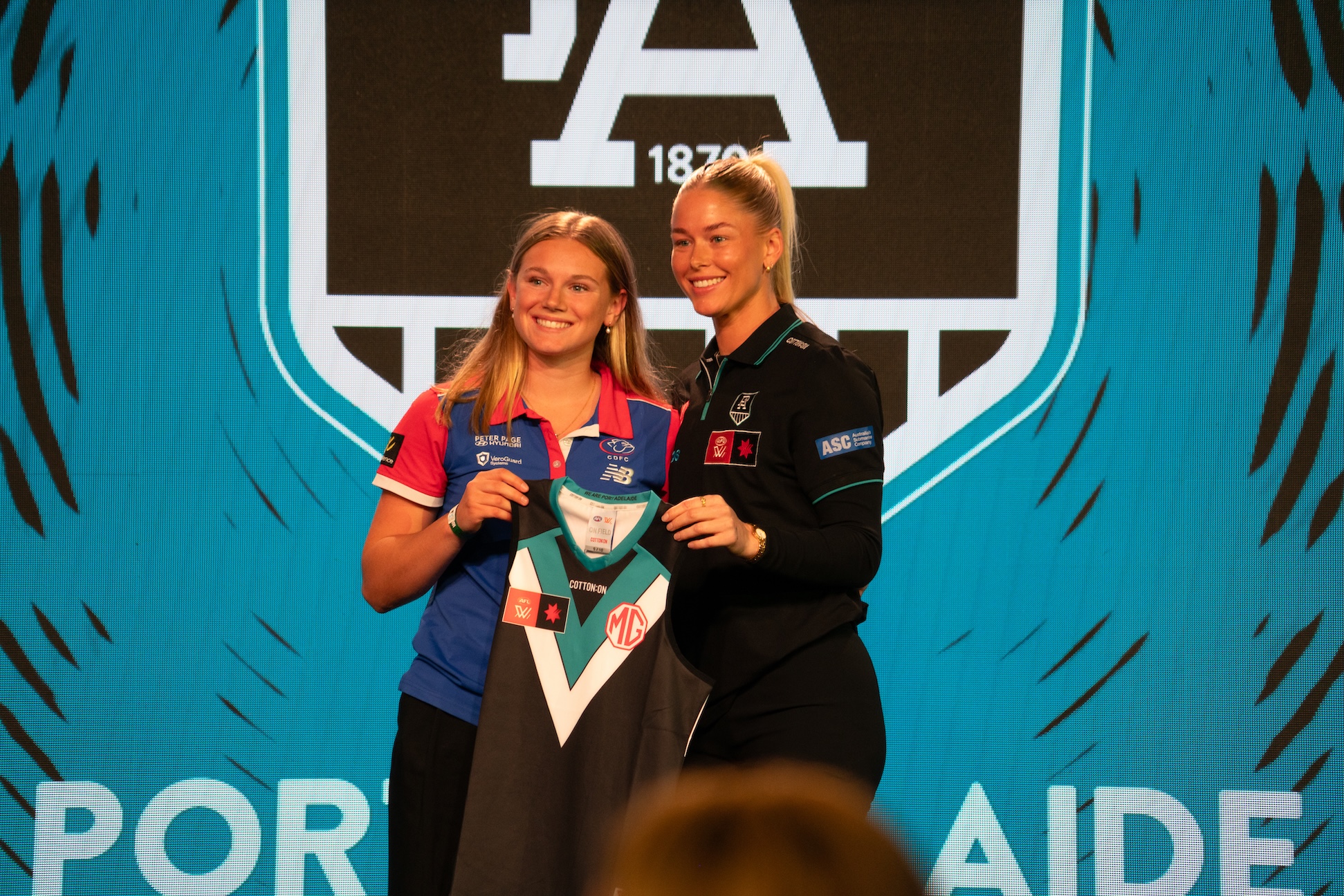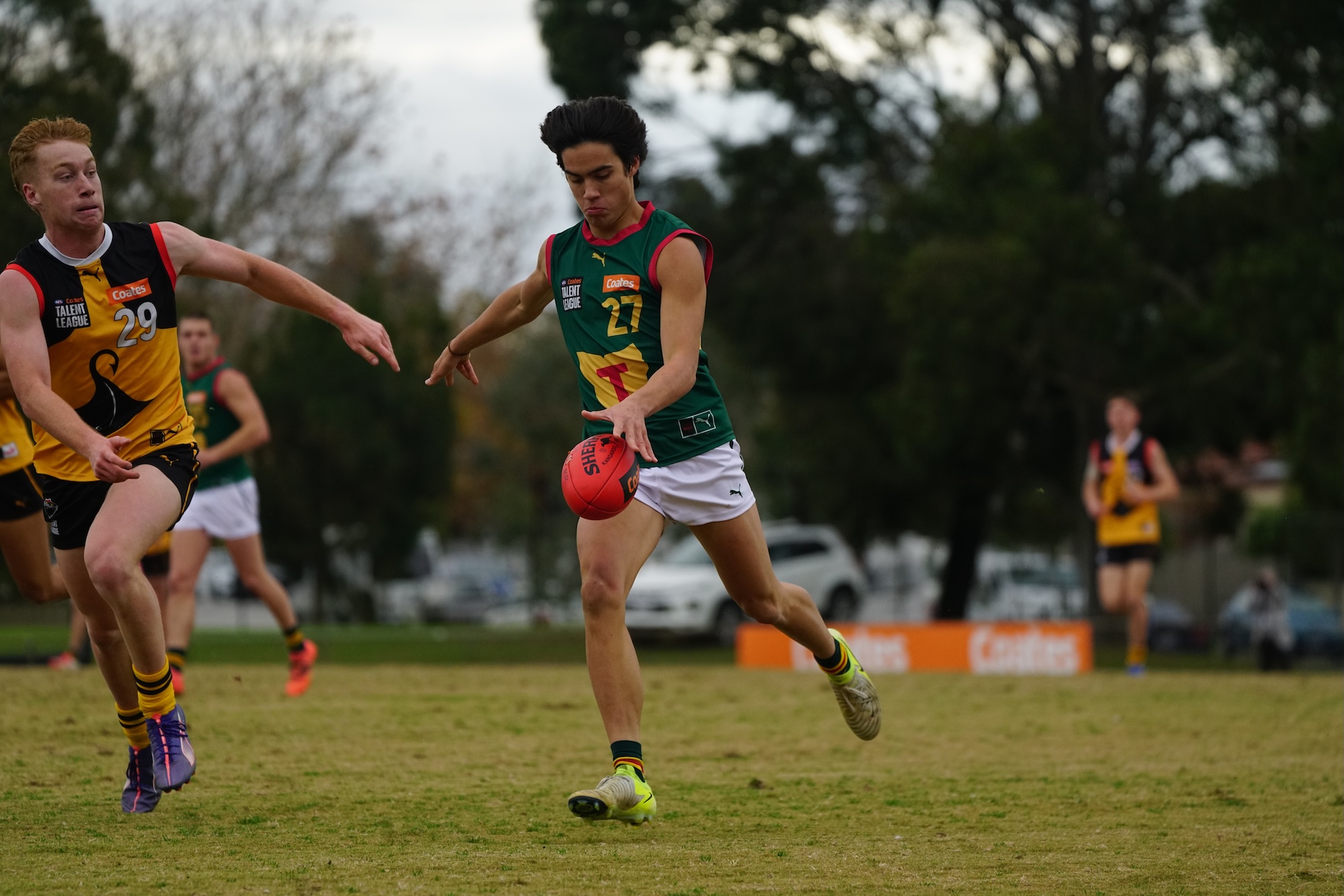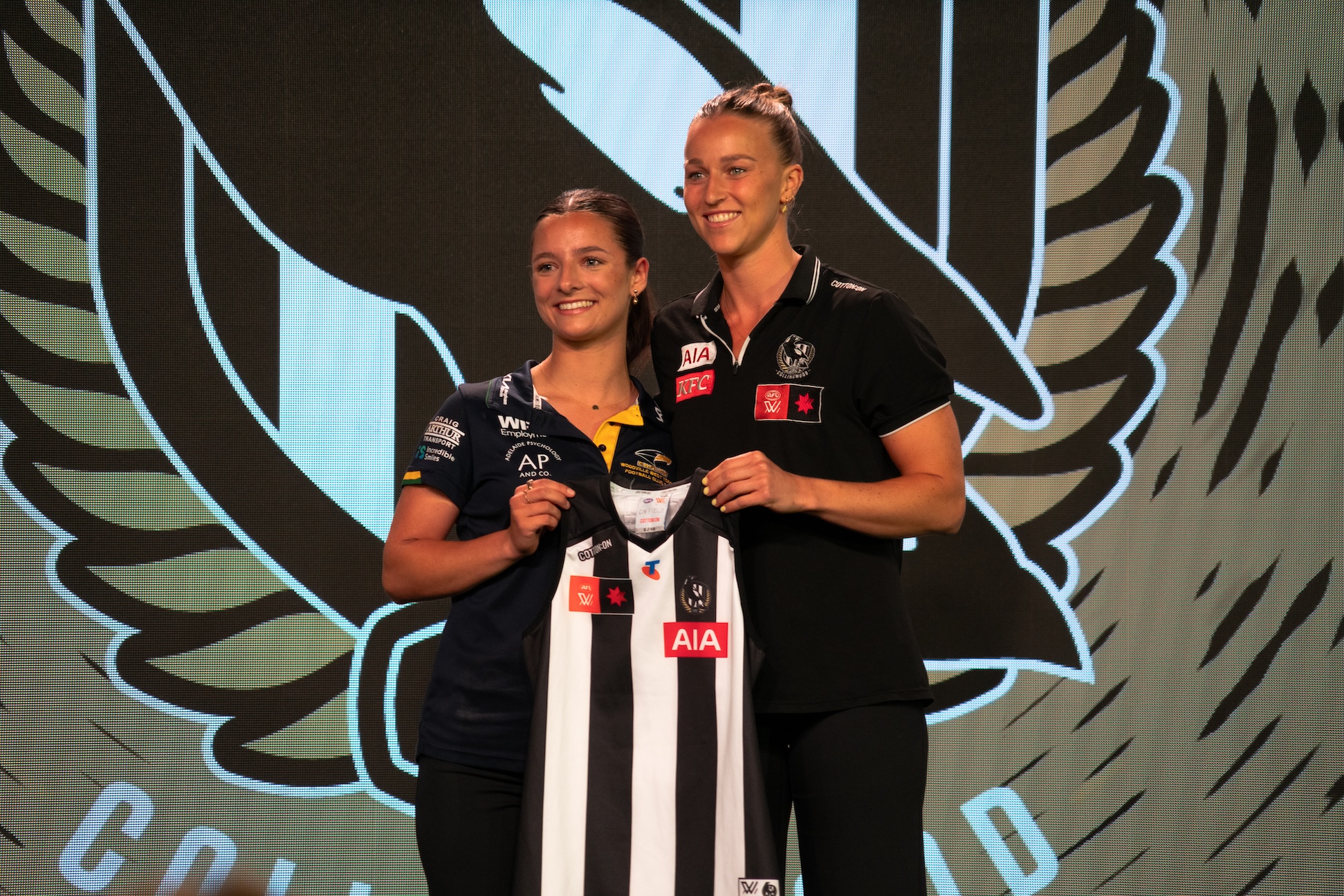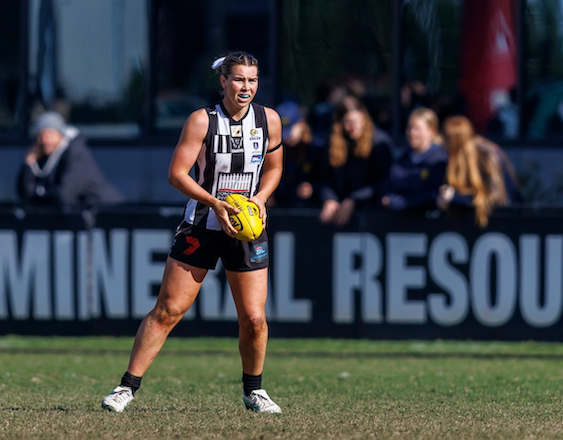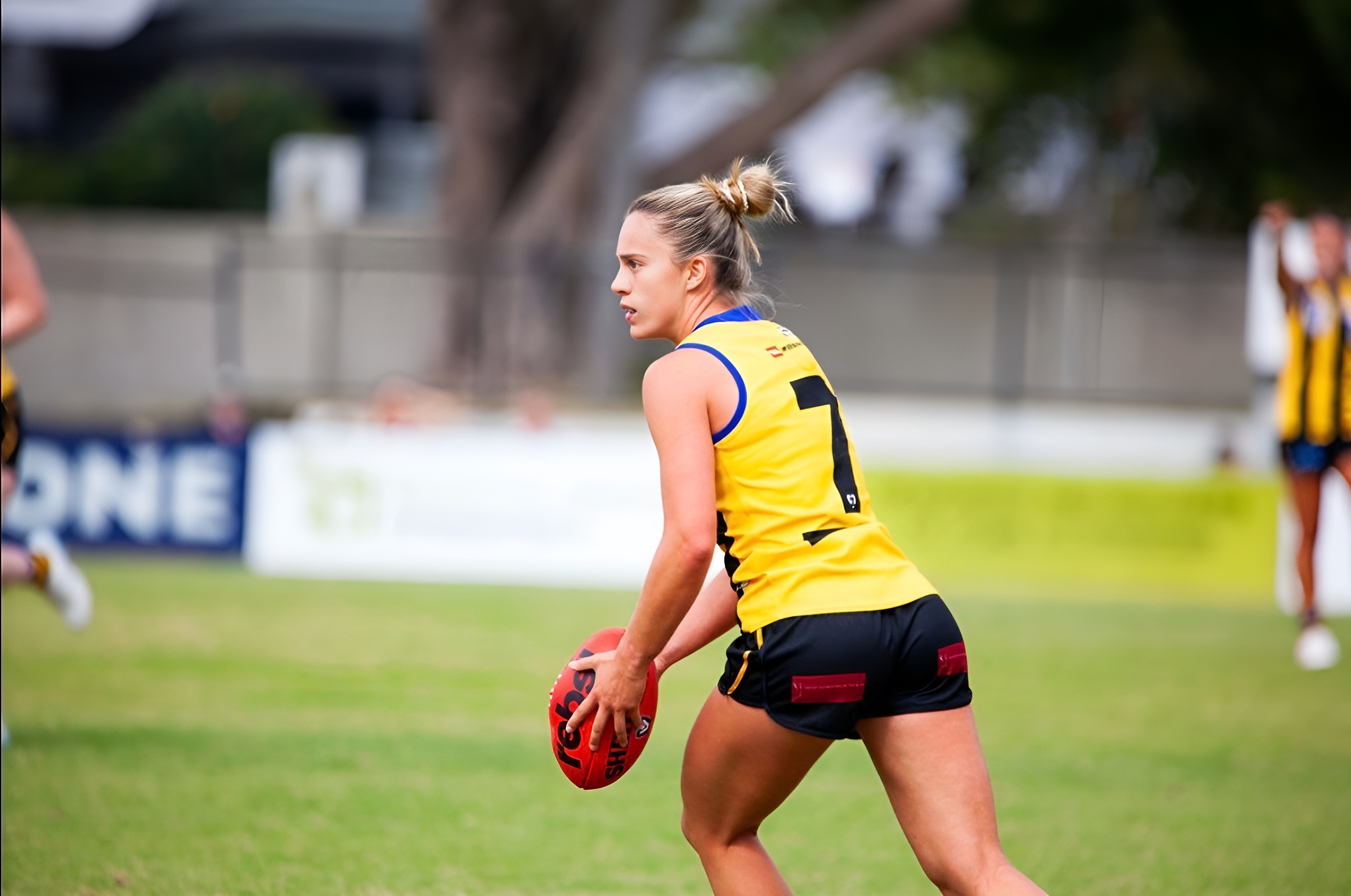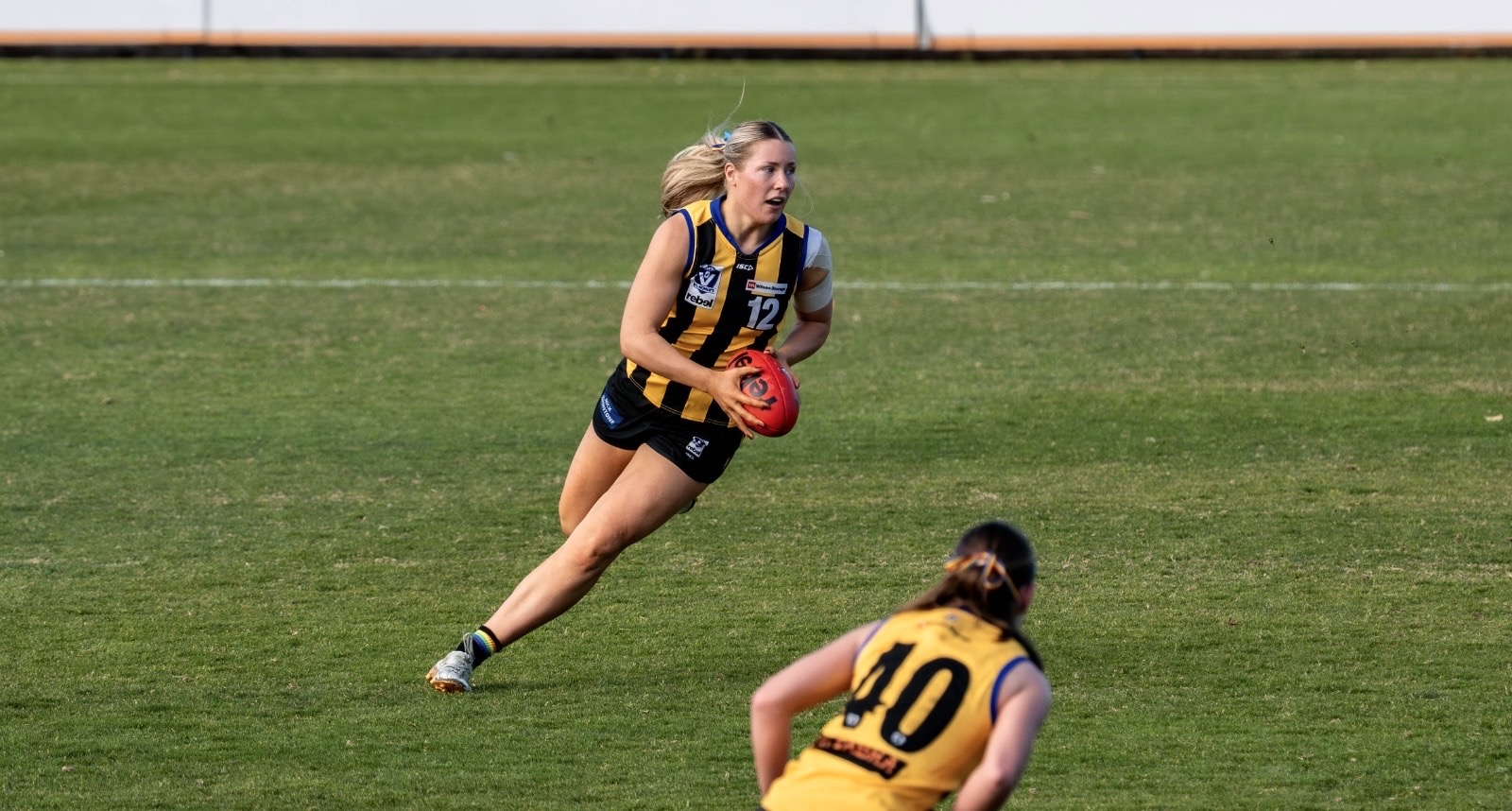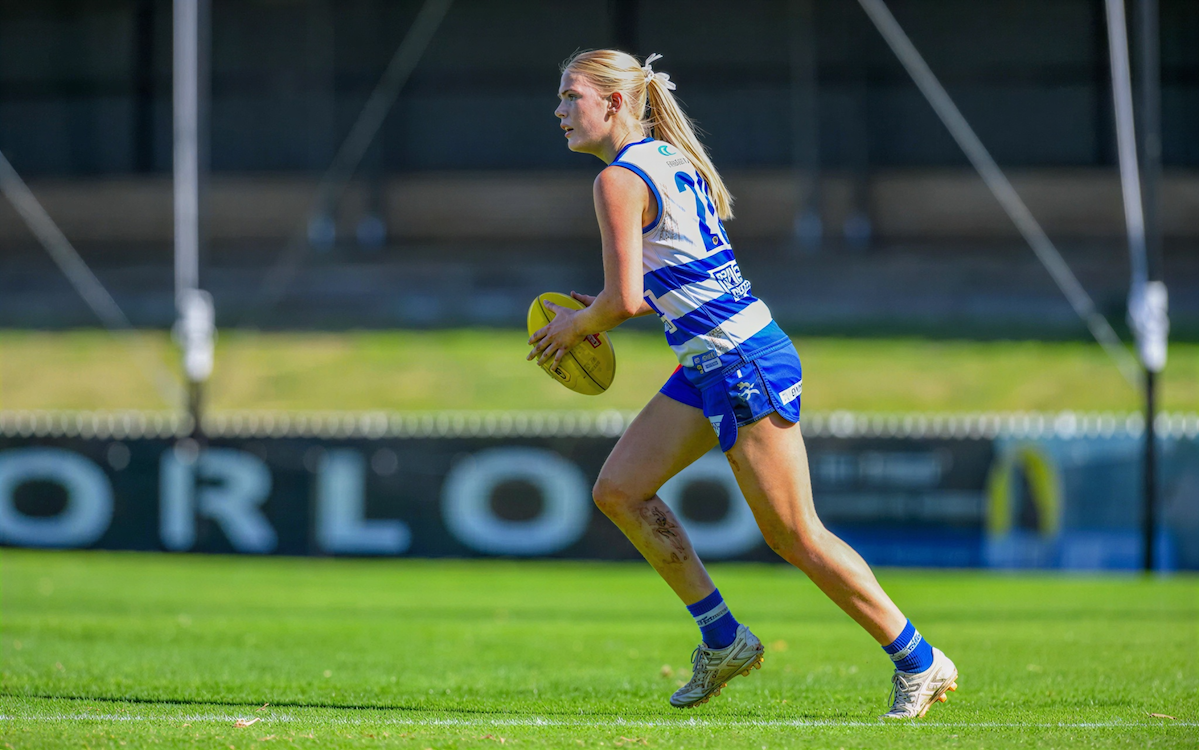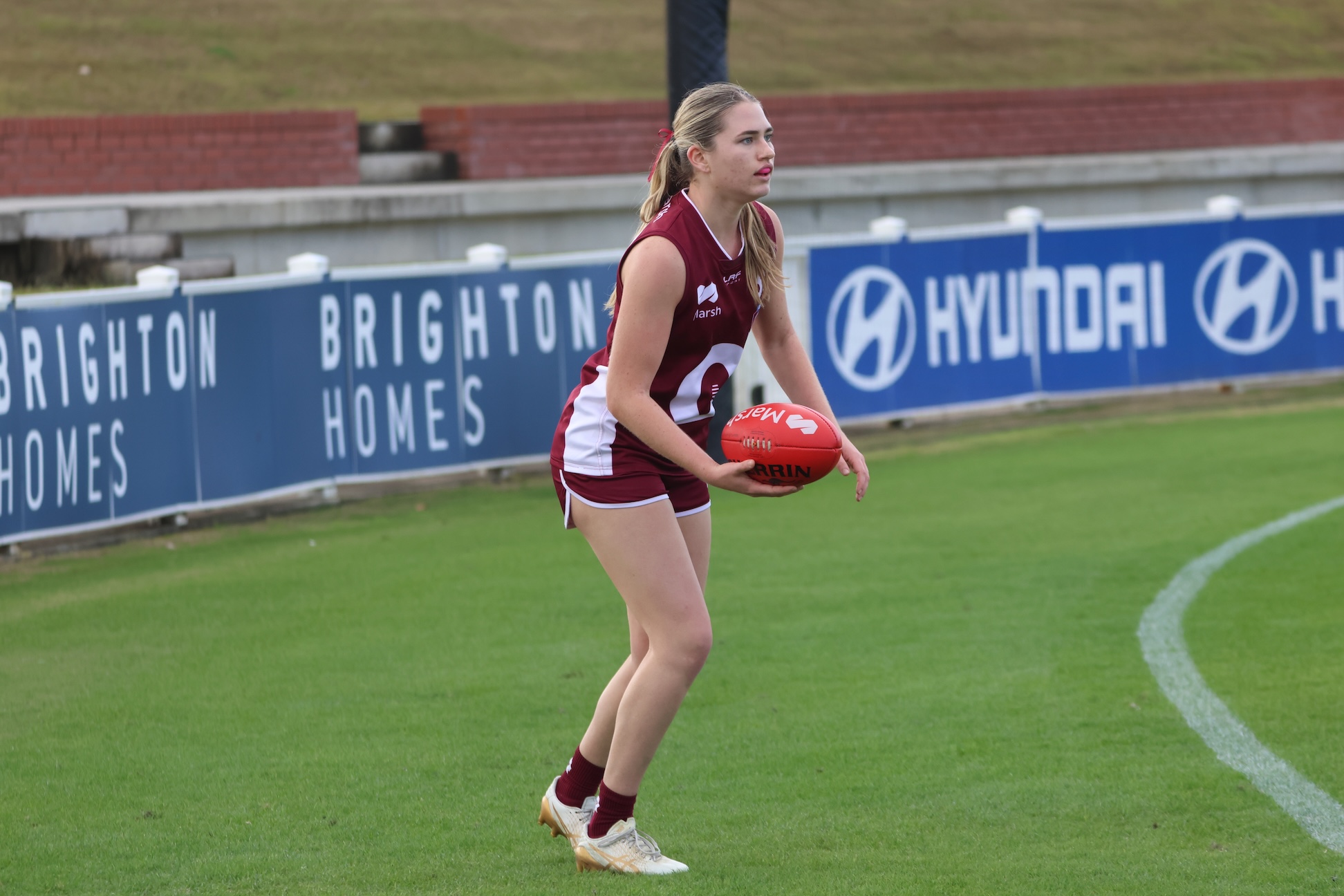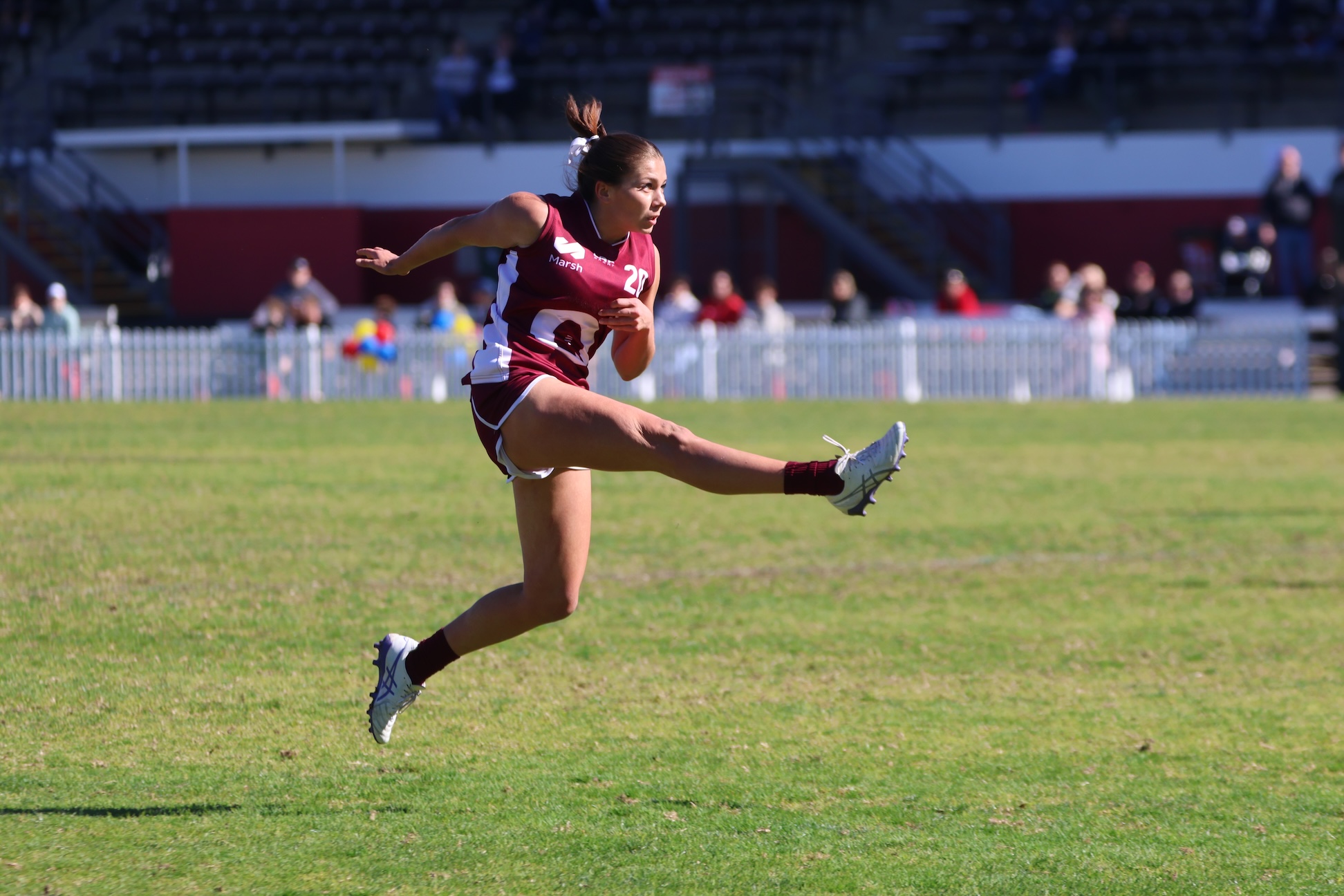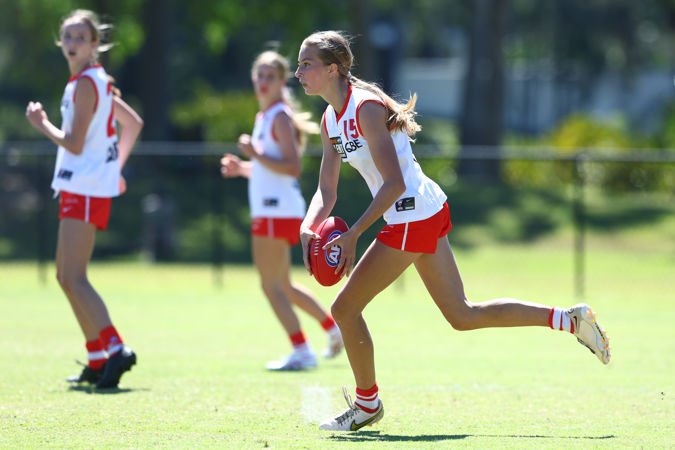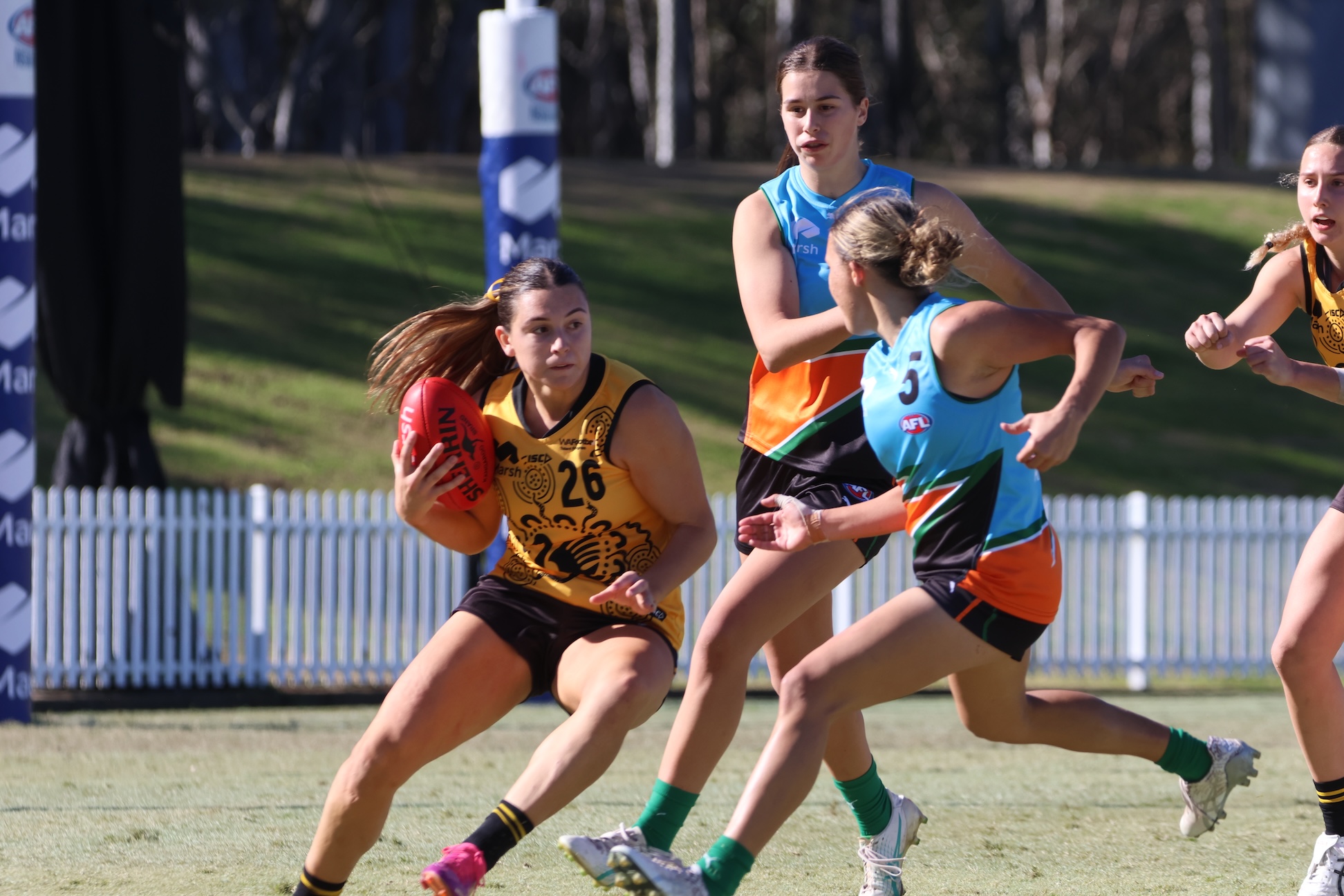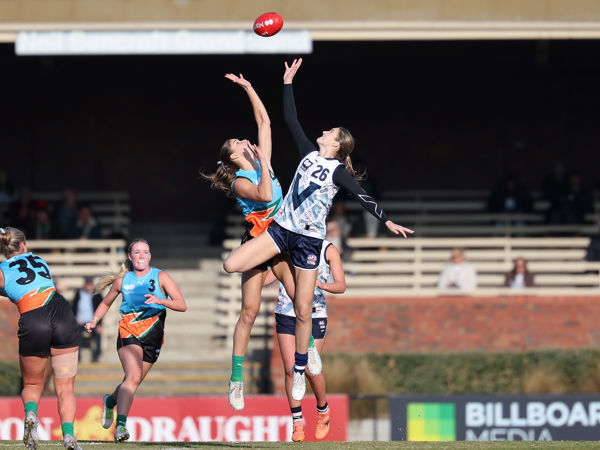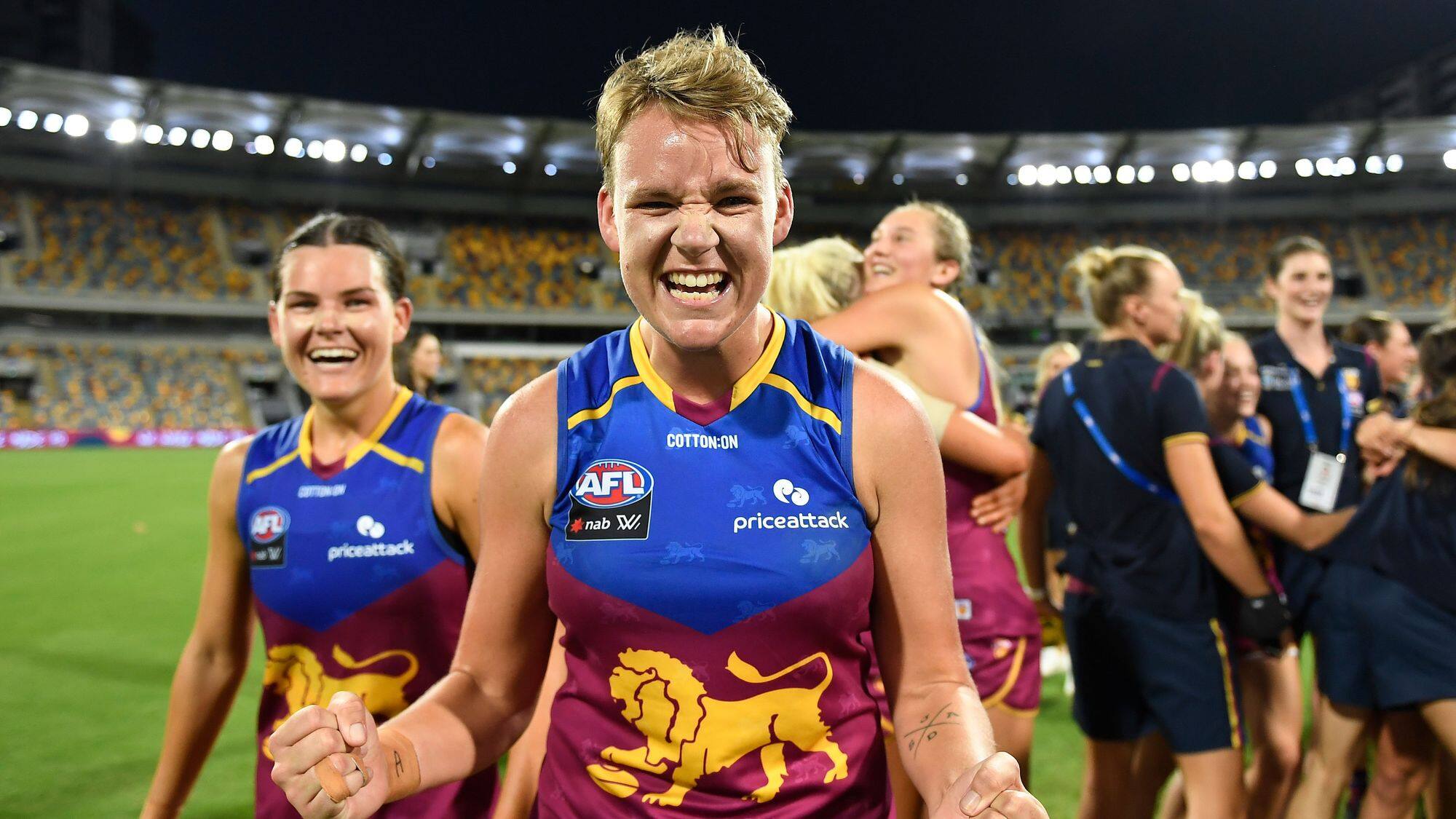Photo: Michael Klein
A deep, distinctive bellowing voice echoed through the stands as the Oakleigh Chargers ran out at Visy Park on a muggy, overcast Sunday morning for the first game of the TAC Cup season. The deep war cry of “c’mon boys, here we go!” forced onlookers to immediately turn to discover a towering 204 centimetre, 94 kilogram giant who cut an imposing figure. That man was none other than Oakleigh’s captain Darcy Moore.
It is no secret that Moore is the son of 172-game Collingwood legend, Peter Moore, whose feats included a Brownlow Medal in 1979, back-to-back Copeland Trophies and led the clubs’ goal kicking twice. He earned All Australian selection in his Brownlow year and also captained the club from 1981-1982, before being inducted into the AFL Hall of Fame in 2005. Moore also played a total of 77 games and won a second Brownlow Medal in his time at Melbourne, but Moore Snr. who has always been a passionate Collingwood man, has passed those traits onto his son, who is equally as passionate about the club his father was considered to be an icon.
Speaking to TAC Cup Radio post-game last Sunday, Moore said the weight of being the son of one of Collingwood’s most decorated players, has been something he has taken in his stride throughout his life. “Yeah look, I’ve had it since I was bloody 10 years old, so I’m pretty used to it,” Moore grinned. “It’s not a weight on my shoulders anymore, it’s a part of life really. We’ve all got two arms and two legs, I’ve just got some handy football pedigree in my blood which helps out a little bit.”
Expectation is something the Moore has carried with ease. The high-profile father-son prospect is the most prodigious talent linked to Collingwood since Travis Cloke’s arrival in 2004. Vic Metro high performance manager Anton Grbac was bullish about Moore’s talents when he spoke with the Herald Sun last month. “On the ground he is fiercely competitive. He can mark the ball, read the play, his skills are very sound and he can play at both ends. Clubs look for those prototypical mobile forwards and he really is that” Grbac said.
For some time, Moore has largely remained an enigma – a player whose talents match his imposing figure – but hasn’t quite established, nor delivered on the hype that has surrounded him. Injury ruined his 2013 season as a bottom-aged player for the Chargers, which resulted in hip surgery and Moore opting to take time out to focus on his year 12 studies at Carey Grammar. Although he returned late in the year, he never really clicked into gear with a lack of conditioning and by his own admission, not 100 per cent fit.
Moore also broke his toe and had surgery on his finger in separate and unrelated injuries, but after a full preseason and an overseas holiday in November; the key position prodigy attacked the preseason with vigour. Moore said he was already feeling refreshed and healthy after a faultless summer campaign that had seen him grow four centimetres and put on an extra nine kilograms, filling out his already massive frame. “It’s the first time I’ve time I’ve really put the work in (over preseason), and it’s just been great.”
“I’m really feeling it (the benefits), especially the last six-to-eight weeks of really full-on training, and I’m feeling really well conditioned and I’ve just proved it then,” after his best on ground effort against the Northern Knights, where he kicked three third quarter goals which kick-started a memorable come-from-behind victory.
“I’m really proud of the boys”, Moore said. “We spoke before the game that we’ve put in four-and-a-half months of hard work, and that’s what you do it for – to come away 1-0 and feeling really fresh heading into round two, so it’s a good start.”
In a team that was blown out of the water in the first quarter, Moore’s leadership and courage were what kept the Chargers in the game. Starting at centre half back, Moore flew for marks, crashed packs, threw his weight around and offered aggression and mongrel, always playing the percentages and directing play. However in the second half, Moore was thrust forward into his natural, centre half forward position and it came with immediate affect. Two contested marks – one of which one was a pack-mark -resulted in two goals in as many minutes that not only changed the momentum of the game, but also gave the Chargers the lead for the first time that afternoon.
From then on, Moore spent much of the second half moving between both key posts, putting on a master class and was a formidable force in the air, setting up goals at one end, then continuing to stop them at the other. In a best afield effort, Moore finished with 14 disposals, eight marks (five contested) and three goals, but it was his desperation in the air and at ground level that goes unnoticed on the stats sheet, but summed up the selfless leader that he is.
His leadership both vocally and physically spurred on his teammates to record a stunning come-from-behind win after an ordinary start to the game, which left the Chargers with a four goal deficient at quarter time, before a 10-goal to five second half onslaught.
Darcy Moore is the prototype of the modern day player who can play at both ends of the ground. He is an elite contested mark and has a faultless set-shot technique which rarely lets him down. He has shown an appetite to compete in the ruck, whilst further enhancing his draft stocks. His strong bubbly character combined with his leadership both on and off his field make him a suitable role model for aspiring footballers.
Regarded as a top five talent ahead of this year’s National Draft, you get the feeling that with the number 30 currently vacant at the Westpac Centre, it might just be sitting in the Pie-warmer, expecting Moore’s arrival as an almost certain father/son selection; to fulfil the fairy-tale his family as well as Collingwood supporters have long dreamt of.


